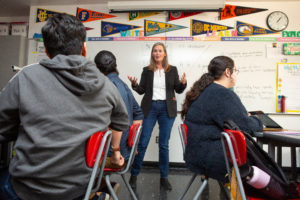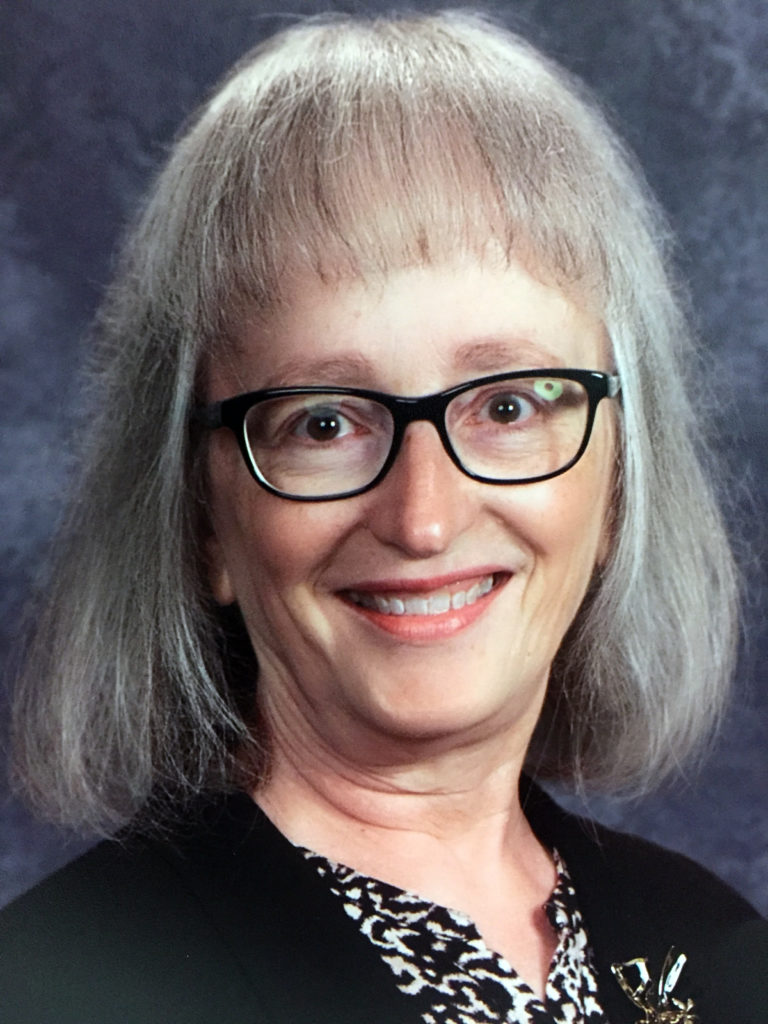Sale! Four-year degrees: 25% off!
Get them while they’re hot! Four-year degrees—now available in under three years.
Today’s special! Start college as a sophomore!
If you walked along the sidewalk that runs in front of Homestead High School, it would not be misleading advertising to see these signs hanging in our windows—or to hear someone singing a little ditty about the joy of dual enrollment.
No, we don’t actually advertise our dual-credit opportunities with bright lights or catchy jingles, but the word is out, and our students are embracing the advantages that our ever-expanding dual-credit program provides to our young learners and their families.
Each year, over 1,300 of our students accept the challenge to enroll in college courses as part of their high school day. The result? Homestead students annually earn a combined total of over 12,000 college credits and save themselves and their families over $8 million in tuition without ever leaving our building.
Many of our students actually start college as sophomores because they have completed all or most of their collegiate general education courses with us. When combined with outstanding AP scores, some students have earned over 50 transferable college credits by the time they walk across the high school graduation stage.
How is this possible?

The first answer to that question begins by recognizing the efforts of our exceptional teaching staff. Over 50 of our dedicated faculty members have worked to refine and adapt their already outstanding curricula in order to offer 60 college-approved courses to our students. When the Higher Learning Commission significantly changed the Indiana dual-credit instructor requirements several years ago, many of our teachers retained their university credentials by going back to school themselves, adding the challenge of being a graduate student to the planning, teaching, assessing, and other tasks that excellent teachers do every day.
We would never have seen the growth in our in-house collegiate program without the assistance of our wonderful counselors. They have become experts on the general education requirements at colleges and universities across the nation so they can advise our students on which dual-credit classes best fit their postsecondary plans.
Eight years ago, our dual-credit program consisted of five teachers, six classes, and less than 200 students earning college credit each year. The phenomenal growth of our program could not have happened without the assistance of innovative school and district-level administrative teams working with university partners to identify intentional and creative ways to provide Homestead students with a college-going experience—and offering Homestead teachers the academic support and training necessary to provide these amazing opportunities.
Most of the credit for the success of our dual-credit program must go to the students of Homestead High School and their families. As eighth graders are completing their final year of middle school, they are faced with selecting high school courses that will satisfy state diploma requirements from the sometimes overwhelming number of course options that are available to students attending a large school. The experience of developing a four-year high school graduation plan can be a bit daunting. At Homestead, these young students and their families are also challenged to think about how careful course selection could have a significant impact on their postsecondary plans. The opportunity to earn all of the necessary college-level general studies credits at little or no cost and to eliminate a full year from the time needed to complete a bachelor’s degree is both exciting and intimidating when the student is just 14 years old.
Our students have not only risen to the challenge, they have flourished—all while taking college courses that demand a high level of academic intensity, work ethic, and dedication in order to succeed. In surveys taken after their first year at college, our graduates report that they are experiencing a high level of success at the university level. Research indicates that dual-credit students are highly prepared for university life academically, psychologically, and socially, and are more likely than their peers to successfully complete their degree programs in four years or less. Our students’ experiences support those findings.

Because they had the opportunity to take so many dual-credit courses, some of our students have earned their degrees and entered the workforce after just three years on the university campus. Some have received highly sought-after internships based on the depth of their college transcripts. Others have gone on to complete master’s degrees during their fourth year of college. Most rewarding of all, some of our students who might never have considered going on to college after high school have developed the confidence and earned the credits that let them know the dream is possible, and that they can be the first one in their family to earn a college degree. It is an honor and privilege to work with such amazing young people and to celebrate their postsecondary success stories.
There are four key steps to creating a robust dual-credit program. The first is to identify the requirements for dual-credit teachers in your state. There are seven major regional accreditation boards, and each has its own credentialing requirements. Contact yours to learn what degrees and coursework are required to teach courses for college credit in the high school setting. Once you understand those expectations, review the transcripts for all of your secondary teachers, including those currently working at the middle level. You may be surprised what types of graduate-level classes and degrees are hiding in those files. We discovered that a teacher who is a retired Coast Guard officer had earned a master’s degree in homeland security. This provided our students with the opportunity to start an associate’s degree in this new field of study by taking that program’s introductory college class with our teacher during their junior year of high school.
After you have identified your potential dual-credit faculty, contact your state’s community colleges and any universities that might be willing to partner with you. You are seeking their assistance in two areas. First, you are trying to establish dual-credit opportunities for your students. Secondly, you are exploring the possibility that the postsecondary institution might provide graduate-level coursework to your staff, in exchange for offering that school’s courses in your building. In Indiana, public universities and colleges have provided thousands of free and low-cost credits to teachers who needed additional coursework to earn or retain their collegiate teaching credentials. Perhaps your state has similar programs, or maybe you can negotiate mutually beneficial arrangements with the colleges that your students typically attend after graduation. When you have a memorandum of understanding in place with a postsecondary partner, the final steps are to educate your families on the benefits of earning college credit while still in high school and then supporting your students as they take on this exciting challenge.
I will be honest with you—building a dual-credit program is a lot of hard work, and there are significant mountains that you will need to climb, or move, to make this happen in your school. But your efforts will be worth it, the rewards will be bountiful, and the impact this program will have on the lives of your students will be unparalleled. It will almost make you want to put a sign in your window, letting the world know that you are having a once in a lifetime sale. Four-year degrees: 25% off!!

